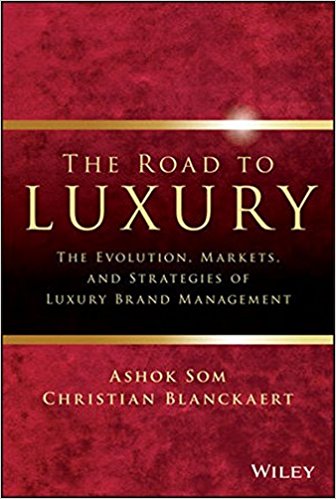Ashok Som, Professor of Management and Strategy at ESSEC Business School and Co-Director of the ESSEC-Bocconi EMiLUX program outlines the 3 key differences between the European and American luxury markets, and how one iconic brand is navigating the divide.
___
Europe is home to some of the World’s most recognized and revered luxury fashion brands: Hermes, Chanel, Louis Vuitton, Moncler, Prada, and Gucci and are just some of the French and Italian luxury houses that have achieved iconic status over the past century. Their global reputations are founded on long histories of unparalleled savoir faire, impeccable craftsmanship, and a strong sense of heritage.
American affordable luxury houses are no less recognizable on the international scene. Brands like Coach, Ralph Lauren, Mikael Kors or Kate Spade have made international names for themselves, founded on some of the same principles that guide Europe’s luxury houses across the Atlantic.
Nevertheless, three critical differences separate typically European luxury brand strategies from typically American ones.
1.The European icon vs American form and function
When we talk about “true luxury”, we’re often talking about the definition upheld by the European luxury houses mentioned above, amongst others. History is a critical ingredient to the success of each of these brands. Over decades, if not centuries, they’ve each forged a distinct brand DNA including signature colors, materials, treatments and other details that make pieces instantly recognizable to other savvy luxury consumers. In other words, European luxury is, above all, iconic and exclusive.
By contrast, many of the most recognized American brands were created from a utilitarian perspective: brands like Ralph Lauren, Coach, or Mikael Kors were initially created to respond to a need or an unmet demand in the North American market. When Coach launched its first atelier, for example, the idea wasn’t to create an iconic product, but rather to offer American consumers well-made – and above all functional – travel cases. Even Tiffany & Co. was born out of this same utilitarian logic: you need a ring to get married, and we can fulfill that need.
Many of the American affordable luxury brands that are well known in the market today gradually expanded their product offerings and tried to portray the American lifestyle to a certain extent. However, their historical intent was not the same. American luxury is still about the form and function of products designed to meet the practical needs of American consumers.
2. European dream weaving vs American consumer choice
As we saw above, European luxury brands place a great deal of importance on exclusivity and creating a desire for the few. According to the European ideal, luxury is by definition something that you don’t need – but that you nonetheless crave because of its iconic status. As a result, the European luxury branding strategy is about building an aspirational desire around iconic products. In other words, we’re talking about pulling savvy clientele into the exclusive world of each brand.
By contrast, American luxury branding strategies often involve pushing clients to choose one brand over the many other brands available to them. American luxury marketing is less about branding and more about sales: how are we going to use e-commerce, digital marketing, in-store promotions and other solutions to drive sales? Here, brand DNA and exclusivity take a backseat to following the latest trends, all in the hopes that clients will choose their products over others in a competitive market.
3. European mind share vs American market share
The American luxury industry’s “push” strategies, as mentioned above, focus not on creating a desire, but giving consumers access to their products to create the American lifestyle. Here, creating a feeling of exclusivity is not as important as meeting demand and conquering market share. Gaining market share involves coming up with a concept, doing market research and testing the concept. Once the market share has been gained, one can increase the price.
For many European luxury houses, this is far from the luxury ideal. By creating an exclusive “dream” to which savvy clientele can aspire, the European luxury logic is more about conquering mind share rather than market share. In other words, a brand’s image and its association with the luxury ethos are more important than how many units are ultimately sold.
Of course, this has set up a kind of conflict between many of the individual European luxury labels – who want to preserve their exclusivity – and the multi-brand conglomerates – who place more importance to the market share and the bottom line.
The Gucci experience: a transcontinental reconciliation
Gucci, after a long hiatus, is one brand successfully walking the fine line between the push and pull strategies favored on each side of the Atlantic. Inspired in part by traditional Indian textiles, creative Director Alessandro Michele has given the brand new life by incorporating an array of exotic new elements.
In his collections, Gucci’s iconic nature remains strong and a great deal of importance is placed on the traditional markers of the brand. However, Gucci has also added new layers and chapters to the brand’s story. Gucci has recognized that consumers are tired of the same old brand DNA of European luxury’s old guard; they want something new and fresh. His collections also recognize that creating “the dream, the desire” is different today than it once was. In an increasingly globalized and uncertain world fraught with war and terrorism, today’s luxury brands need to focus on being aspirational in different ways. Gucci’s 2017 collect is inclusive and multicultural and takes consumers on a real journey of discovery. Finally, his collections capture mindshare while appealing to a growing luxury clientele, by going beyond the European tradition and reaching out to a growing segment of luxury consumers in emerging economies.










